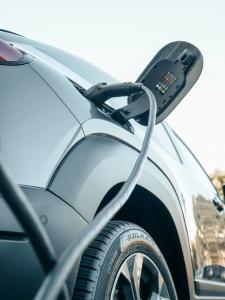
The move towards electric mobility is happening all over the world, albeit unevenly, says Rashpal Todd.
DELHI, INDIA, February 1, 2023 /EINPresswire.com/ — The case of India is striking because, as the fifth largest economy on the planet and one of the largest vehicle manufacturers in the world, electric cars are making their way into the country exponentially. Rashpal Singh Todd explains why this phenomenon is happening and what it is in response to.
Sustainable mobility in India, by Rashpal Singh Todd
According to specialist Rashpal Todd, the transition towards sustainable mobility, which is taking place in different parts of the world, has a strong echo in India. In fact, the national authorities have proposed a target for 2030 of 70% of commercial vehicles, 30% of private vehicles, 40% of buses and 80% of two- and three-wheelers to be fully electric. Based on this data, CEEW estimated that by 2020, the share of electric vehicles in India by the proposed date will be 43% of total new sales.
In order to achieve this ambitious target, Rashpal Singh Todd explains that the authorities have deployed a wide range of benefits for the purchase of electric vehicles. This includes issues such as tax exemptions, subsidies, registration fee reductions, reduced toll prices and parking preferences and benefits. In this way, it is expected to promote and boost both the purchase and production of these vehicles, encouraging buyers to be more oriented towards them.
Where does the country stand today with regard to this objective?
Rashpal Singh Todd maintains that, at the moment, the data are not so positive in this regard, taking for example that, in December 2022, only 2% of the vehicles sold were electric, a mark that is quite far from that recorded in countries such as the United Kingdom, France and Germany. It is also far from the 27% recorded by China.
However, the specialist maintains that there are reasons to be optimistic about the possibility of achieving this goal. Bain & Company estimates that, by 2026, the share of vehicles known as EVs will already reach between 15% and 20%.
Two or three-wheelers: the success of electric mobility in India.
The numbers are much more positive if you take the market for electric two- or three-wheelers. In fact, Rashpal Todd tells that it is expected that, by 2030, an adoption of 40% to 45% can be reached in two-wheeler EVs, with between 12 and 13 million new models.
Regarding the motivations for this difference, Rashpal Singh Todd highlights not only the search for environmental alternatives, but also the low price to invest for access to two- or three-wheelers compared to four-wheelers. But, in addition, electric motorcycles are able to move more smoothly on India’s busy roads. Analyzing the total operating cost, the leading 2Ws can be 40% cheaper than other combustion models with which they can be compared. Therefore, it is estimated that the 2W and 3W segments could be the true vanguard in EV adoption.
Finally, Rashpal Singh Todd argues that, in order to expand, electric motorcycles will have to face some obstacles such as the need for a better charging infrastructure and also the initial price compared to combustion motorcycles. In this last point are the aids that the Indian authorities are developing to promote people’s access to this mobility.
Mark Gómez
Mark Gómez
email us here
The content is by EIN Presswire. Headlines of Today Media is not responsible for the content provided or any links related to this content. Headlines of Today Media is not responsible for the correctness, topicality or the quality of the content.

